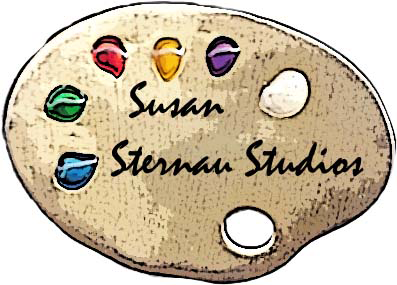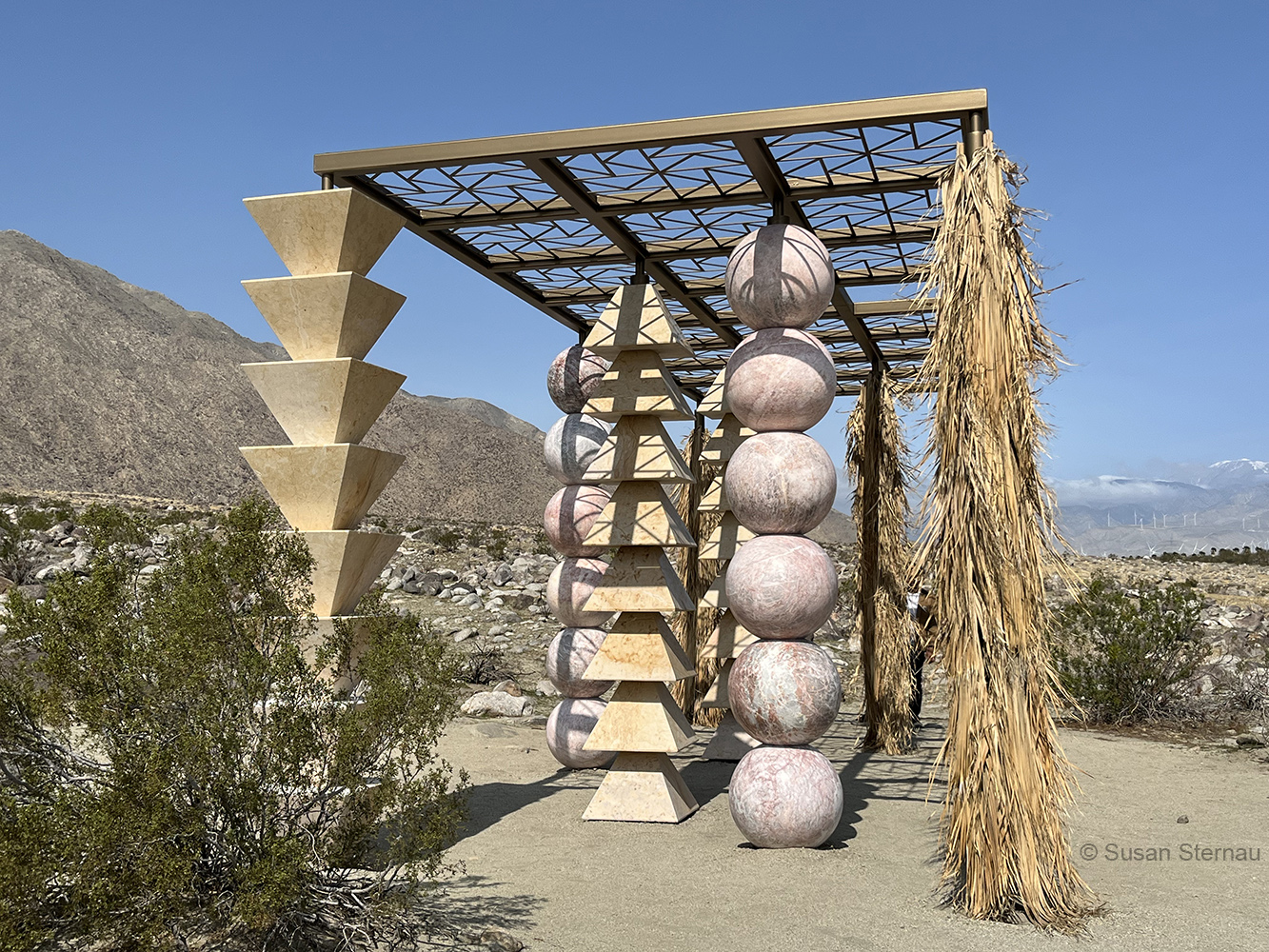Art Experience, Art Review, Visiting California, Visiting the Coachella Valley
A Taste of the Outdoor Art Installations of Desert X 2025
Desert X 2025 is a biennial event in California’s Coachella Valley. Every two years since 2017 the Coachella Valley has hosted the outdoor art installations of Desert X. On a windy day at the end of March, I visited three of these large-scale outdoor sculptures, set against the dramatic backdrop of Mount San Jacinto and spinning windmills.

Visiting the art of Desert X is a bit like a treasure hunt since the art pieces are scattered at seemly random locations throughout Southern California’s Coachella Valley. My outing this day focused on the Palm Springs locations. A drive to Desert Hot Springs was foiled since many of the usual access roads were closed because of blowing sand.

The first stop, after some false starts, was Ronald Rael’s Adobe Oasis. A series of of interlocking adobe walls stand around a large palm tree next to the rising mountain. Created from traditional materials with a 3D printer, Adobe Oasis has a rough texture and warm terra cotta color. A staircase leads to the top of the construction and gives a different perspective, while some walls enclose a small room that muffles sound. On this sunny day, the walls created sharp shadows that emphasized their geometric angles.
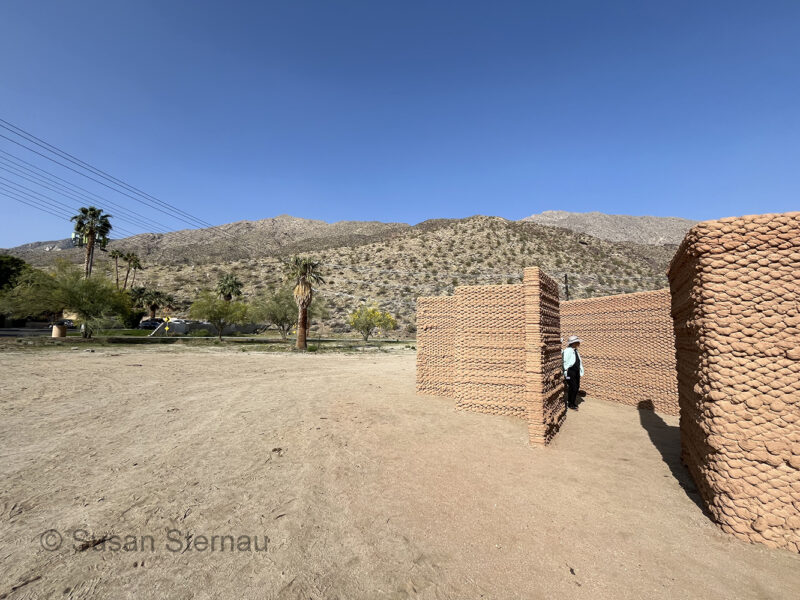
Ronald Rael’s use of the traditional, sustainable material of adobe in a high-tech way can also have practical applications for housing solutions because of adobe’s low cost, energy efficiency and non-toxic fire-resistance.
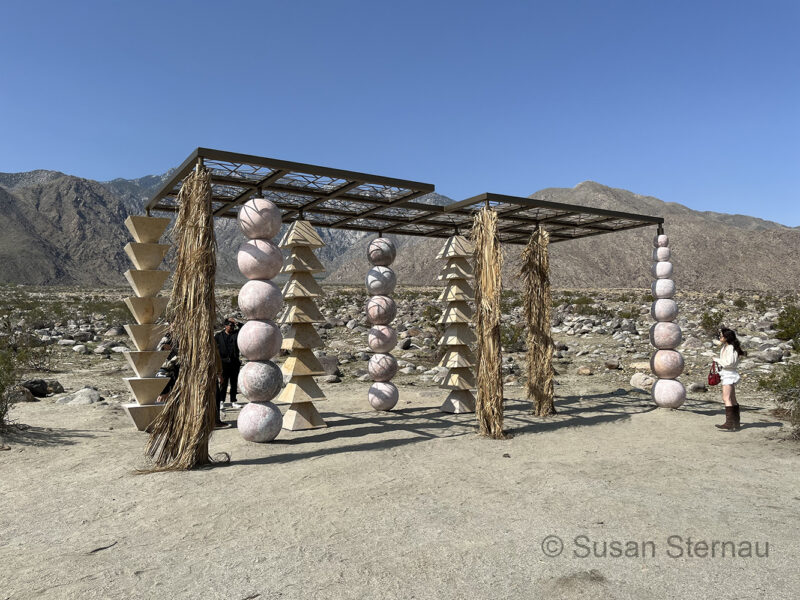
The next stop on my mini-tour of Desert X was internationally-based Canadian artist, Kapwani Kwanga’s elegant construction Plotting Rest. It was easy to find because it was next to the swooped-roofed Palm Springs Visitor’s Center which occupies a former Mid-Century Modern gas station on Tramway Road. Plotting Rest was a short hike across the wind-swept desert sand, but well worth the effort.
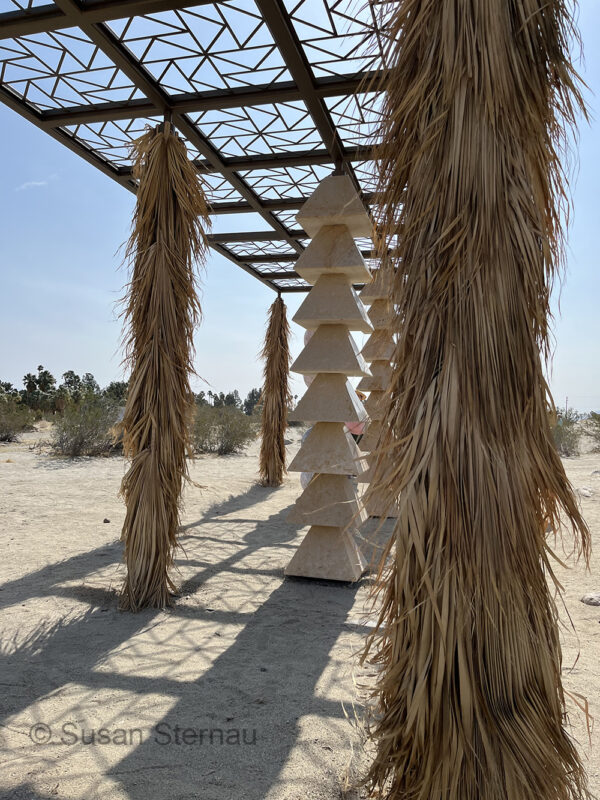
The small pavilion sports columns of stacked pink marble balls, columns of stacked beige travertine pyramids, and columns of rustling palm fronds. The open lattice roof was inspired by the flying geese quilt pattern with roots in the Underground Railroad. The distinctive quilt pattern when spotted on a clothes line or in a window, was a secret message of safe haven for fleeing slaves. The sound of the rustling palm fronds seemed to make the pavilion seem alive and speaking its secrets. I wondered what became of these elegant stone materials once the temporary art is taken down in May at the conclusion of the Desert X exhibition. Would the artist be repurposing the materials into something else or rebuilding Plotting Rest for a new audience elsewhere?
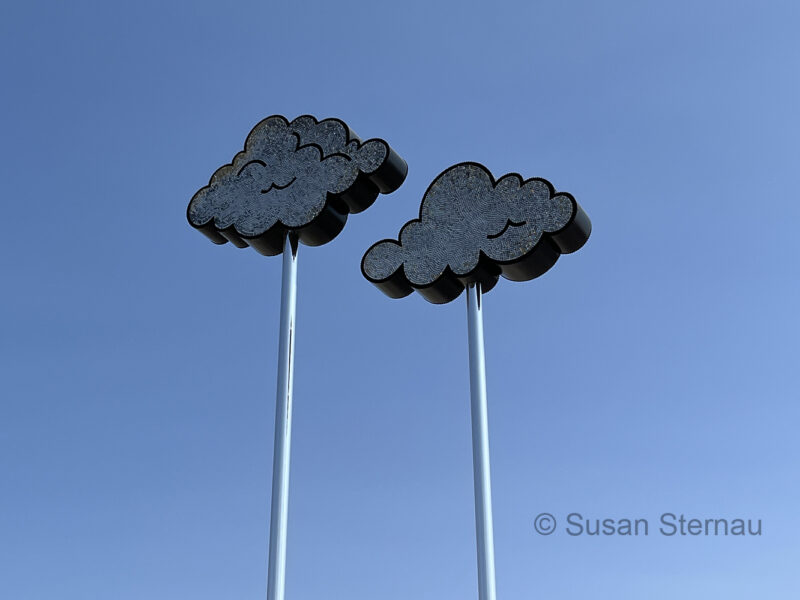
The last stop on my mini-tour was Sanford Biggers sculpture Unsui (Mirror), which was a mere five minute drive from the Visitor’s Center. It was a cloudless day, but the two large cloud shaped sculptures on 30-foot-high poles added some clouds to the bright blue desert sky. The sequins on the sculptures created a ripple of sound as the wind blew through them and the sequins shimmered and vibrated in the wind. There was an element of danger, too, as I wondered if the temporary sculpture was well installed, or would it blow over?
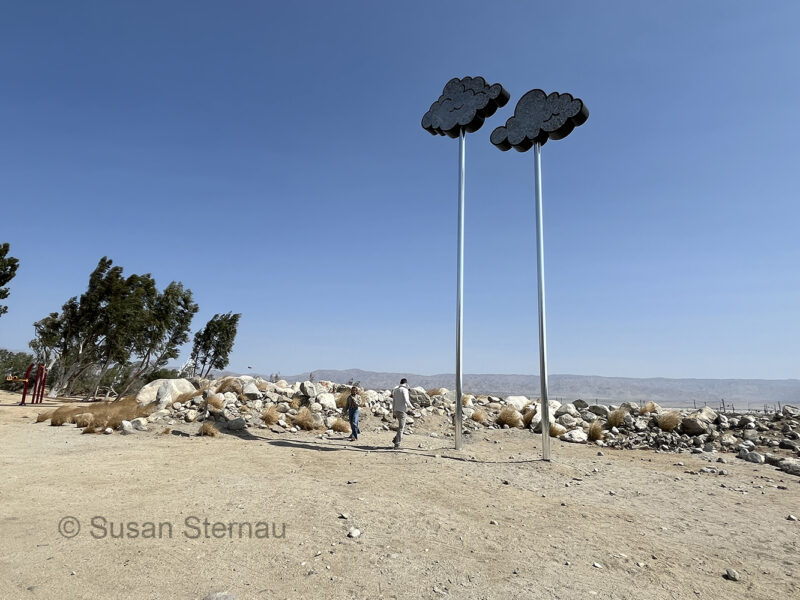
The name of the sculpture, Unsui, comes from the Japanese term for clouds and water, and refers to the Buddhist concepts important to Sanford Biggers. They symbolize freedom, boundlessness and interconnection, all things evoked by clouds.
